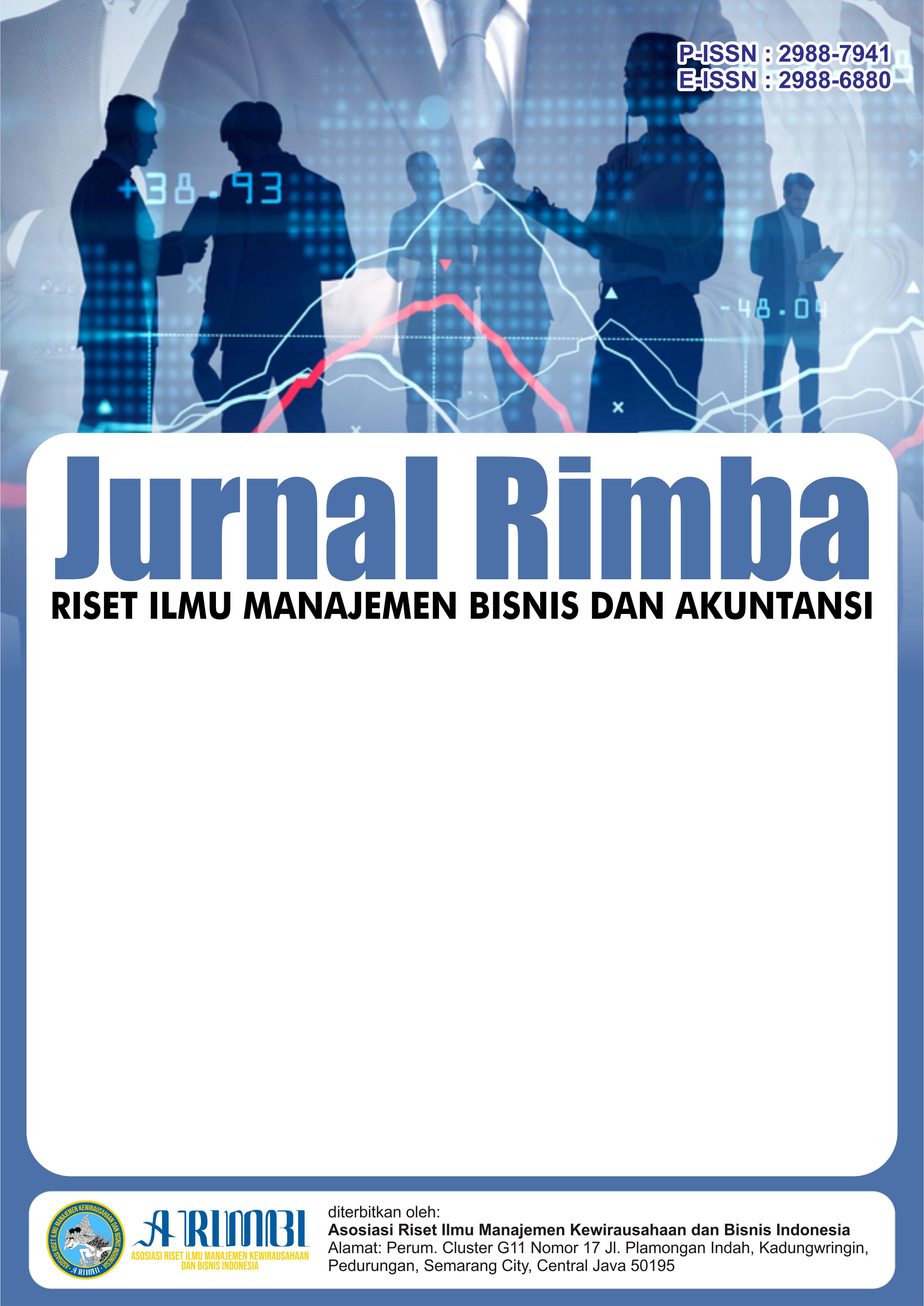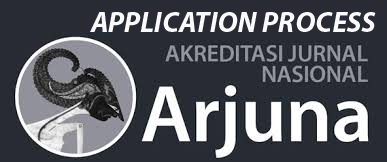Pengaruh Modal Intelektual terhadap Kinerja Bisnis UMKM Bidang Kreatif
DOI:
https://doi.org/10.61132/rimba.v3i4.2299Keywords:
Business Performance, Human Capital, Intellectual Capital, MSMEs, Structural CapitalAbstract
Intellectual capital represents information that reflects the quality of human resources and the knowledge assets owned by a business unit. This study aims to examine the influence of intellectual capital on business performance in creative sector MSMEs, specifically in the fashion and beauty industries in Surabaya. Data were collected through questionnaires distributed to business owners to capture their understanding of the components of intellectual capital and its impact on business performance. The study employs a quantitative method with a correlational approach to analyze the relationships between variables. The results of significance tests indicate that intellectual capital overall has a notable impact on business performance. Specifically, Human Capital, Structural Capital, Relational Capital, Technological Capital, and Business Capital exert a positive influence, demonstrating that the quality of human resources, organizational structure, business relationships, technology utilization, and business assets are key factors in improving MSME performance. Conversely, Customer Capital shows a negative influence, highlighting the need for more effective strategies in managing and leveraging customer-related resources. These findings confirm that intellectual capital significantly affects the performance of creative sector MSMEs, suggesting that proper management and development of each component of intellectual capital is essential for enhancing competitiveness, sustaining growth, and ensuring the long-term success of small and medium enterprises.
Downloads
References
Agus, M. (2009). Sistem informasi: Konsep dan aplikasi. Yogyakarta.
Akuntansi, S., Bisnis, F., Maranatha, K., & Chandra, H. (2021). Pengungkapan modal intelektual. Jurnal Akuntansi, 13(1), 1–11. Retrieved from http://journal.maranatha.edu
Ali, B. J., & Anwar, G. (2021). Intellectual capital: A modern model to measure the value creation in a business. International Journal of Economics, Business and Management, 5(2). https://doi.org/10.22161/ijebm.5.2
Amalia, L., Rokhyadi, A., & Prodi Manajemen Universitas Mercu Buana Yogyakarta, D. (2020). Performance of the advertising, printing, and media subsectors listed on the Indonesia Stock Exchange. Jurnal Ilmiah Mahasiswa Ekonomi Manajemen, 4(1), 187–200. Retrieved from http://jim.unsyiah.ac.id/ekm
Andika, S., & Dewi Astini. (2022). Pengaruh intellectual capital terhadap profitabilitas dalam perspektif syariah. Jurnal Akuntansi Syariah (JAS), 6(2), 228–244. https://doi.org/10.46367/jas.v6i2.849
Angelica Cindiyasari, S., Junarsin, E., Ayu Nani, D., & Septiani, E. (2022). Does intellectual capital affect financial performance? An empirical evidence from financial companies in Indonesia.
Aprilianti, N., Surtiani, A., & Johan, A. (2023). Business performance MSMEs Bandung City: The role of marketing mix strategy and service quality (Study at Sambel Mitoha Restaurant Bandung). Management Studies and Entrepreneurship Journal, 4(6). Retrieved from http://journal.yrpipku.com/index.php/msej
Arikunto, S. (2002). Metodologi penelitian: Suatu pendekatan proposal. Yogyakarta: Rineka Cipta.
Azzahra, K. (2016). Pengaruh human capital, structural capital dan relational capital terhadap kinerja koperasi dengan competitive advantage sebagai variabel intervening. Universitas Esa Unggul.
Baron, A. (2011). Measuring human capital. Strategic HR Review, 10(2), 30–35. https://doi.org/10.1108/14754391111108338
Bontis, N. (2001). Assessing knowledge assets: A review of the models used to measure intellectual capital. International Journal of Management Reviews, 3(1), 41–60.
Chatterjee, S., Chaudhuri, R., Thrassou, A., & Sakka, G. (2022). Impact of firm’s intellectual capital on firm performance: A study of Indian firms and the moderating effects of age and gender. Journal of Intellectual Capital, 23(1), 103–126. https://doi.org/10.1108/JIC-12-2020-0378
De Gregorio, J., Edwards, S., & Valdés, R. (2000). Controls on capital inflows: Do they work? Journal of Development Economics, 63(1), 59–83. Retrieved from https://EconPapers.repec.org/RePEc:eee:deveco:v:63:y:2000:i:1:p:59-83
Dewi, H. R., Mutiara, L., & Dewi, C. (2020). Modal intelektual dan nilai perusahaan pada industri jasa dan pertambangan di Indonesia. National Conference of Accounting and Finance (NCAF), 2, 132–143. https://doi.org/10.20885/ncaf.vol2.art11
García Castro, J. P., Duque Ramírez, D. F., & Moscoso Escobar, J. (2021). The relationship between intellectual capital and financial performance in Colombian listed banking entities. Asia Pacific Management Review, 26(4), 237–247. https://doi.org/10.1016/j.apmrv.2021.03.002
Ghozali, I. (2016). Desain penelitian kuantitatif dan kualitatif untuk akuntansi, bisnis dan ilmu sosial lainnya. Semarang: Universitas Diponegoro.
Harahap, S. H. (2020). Pengaruh intellectual capital terhadap profitabilitas pada perusahaan. Jurnal Riset Akuntansi dan Bisnis, 20(2), 6624567. https://doi.org/10.30596/jrab.v20i2.5855
Hariyati, & Nuswantara, D. A. (2018). Contingent factors participatory budgeting, internal processes performance and business performance: A case of manufacturing companies in Indonesia. Jurnal Akuntansi dan Keuangan Indonesia, 15(1), 15–30.
Hartini, S. (2012). Peran inovasi: Pengembangan kualitas produk dan kinerja bisnis. Malang: Universitas Negeri Malang Press.
Hasan, I. (2002). Metodologi penelitian dan aplikasinya. Jakarta: Ghalia Indonesia.
Hasan, M., Noercahyo, A., Rani, A. E., Salshabilla, N. A., & Izzati, S. N. (2021). Pengembangan ekonomi kreatif sektor UMKM di masa pandemi COVID-19. Jurnal Ekonomi Pendidikan dan Kewirausahaan, 9(2), 125–138. https://doi.org/10.26740/jepk.v9n2.p125-138
Hassan, I. (2006). Teknik penyusunan instrumen tes dan non-tes. Jakarta: Ghalia Indonesia.
Julia Permadani, D. A. (2020). Analisis pengaruh modal intelektual terhadap kinerja keuangan perusahaan sektor industri barang konsumsi yang terdaftar di Bursa Efek Indonesia. [Skripsi, Universitas Muhammadiyah Surakarta]. http://eprints.ums.ac.id/83790/
Kamal, M. A. (2017). Intellectual capital and firm performance in Indonesia: The moderating role of corporate governance. Asian Journal of Accounting and Governance, 8, 99–108. https://doi.org/10.17576/AJAG-2017-08-09
Kartika, A. (2020). Pengaruh modal intelektual terhadap kinerja keuangan dengan competitive advantage sebagai variabel intervening. Jurnal Akuntansi Multiparadigma, 11(3), 468–482. https://doi.org/10.21776/ub.jamal.2020.11.3.27
Kasmir. (2014). Analisis laporan keuangan. Jakarta: Raja Grafindo Persada.
Lestari, A. P., & Nugroho, M. A. (2021). Pengaruh modal intelektual terhadap kinerja keuangan perusahaan sektor manufaktur di BEI. Jurnal Ilmiah Akuntansi dan Bisnis, 16(1), 72–83. https://doi.org/10.24843/JIAB.2021.v16.i01.p06
Lubis, I., & Sari, D. (2019). The effect of intellectual capital on firm performance: Evidence from manufacturing companies in Indonesia. International Journal of Business and Management Invention, 8(6), 45–52.
Marr, B. (2018). Data-driven HR: How to use analytics and metrics to drive performance. London: Kogan Page Publishers.
Mavridis, D. G. (2004). The intellectual capital performance of the Japanese banking sector. Journal of Intellectual Capital, 5(1), 92–115. https://doi.org/10.1108/14691930410512941
Mohtar, S., Nasir, A., & Said, R. (2015). Intellectual capital and its impact on financial performance: Evidence from Malaysian financial institutions. Asian Economic and Financial Review, 5(7), 1066–1078. https://doi.org/10.18488/journal.aefr/2015.5.7/102.7.1066.1078
Naz, F., Ijaz, F., & Naqvi, F. (2016). Financial performance analysis (comparative study of Islamic and conventional banks of Pakistan). International Journal of Economics and Financial Issues, 6(4), 138–146.
Nawaz, T., & Haniffa, R. (2017). Determinants of financial performance of Islamic banks: An intellectual capital perspective. Journal of Islamic Accounting and Business Research, 8(2), 130–142. https://doi.org/10.1108/JIABR-06-2016-0071
Nimtrakoon, S. (2015). The relationship between intellectual capital, firms’ market value and financial performance: Empirical evidence from the ASEAN. Journal of Intellectual Capital, 16(3), 587–618. https://doi.org/10.1108/JIC-09-2014-0104
Nugroho, P. I., & Hidayah, N. (2020). Pengaruh modal intelektual terhadap kinerja keuangan pada perusahaan sektor properti, real estate, dan konstruksi bangunan di BEI. Jurnal Akuntansi dan Keuangan Indonesia, 17(1), 1–15. https://doi.org/10.21002/jaki.2020.01
Pulic, A. (2000). VAIC™ – An accounting tool for IC management. International Journal of Technology Management, 20(5–8), 702–714. https://doi.org/10.1504/IJTM.2000.002891
Randa, F., & Solon, P. (2012). Intellectual capital and financial performance: Evidence from Indonesian banking industry. Asian Journal of Accounting and Finance, 4(1), 65–78.
Rizal, N., & Lestari, D. (2019). Pengaruh modal intelektual terhadap kinerja perusahaan dengan profitabilitas sebagai variabel mediasi. Jurnal Akuntansi dan Auditing Indonesia, 23(2), 101–114. https://doi.org/10.20885/jaai.vol23.iss2.art3
Stewart, T. A. (1997). Intellectual capital: The new wealth of organizations. New York: Doubleday/Currency.
Suhendah, R. (2012). Pengaruh modal intelektual terhadap kinerja keuangan perusahaan publik di Indonesia. Jurnal Akuntansi dan Keuangan Indonesia, 9(1), 1–15. https://doi.org/10.21002/jaki.2012.01
Sveiby, K. E. (1997). The new organizational wealth: Managing & measuring knowledge-based assets. San Francisco: Berrett-Koehler Publishers.
Ulum, I. (2017). Intellectual capital: Model pengukuran, framework pengungkapan dan kinerja organisasi. Yogyakarta: UII Press.
Wijayanti, D., & Susanto, H. (2019). Pengaruh modal intelektual terhadap kinerja keuangan pada perusahaan manufaktur di Indonesia. Jurnal Akuntansi Multiparadigma, 10(2), 280–292. https://doi.org/10.21776/ub.jamal.2019.10.2.15
Youndt, M. A., Subramaniam, M., & Snell, S. A. (2004). Intellectual capital profiles: An examination of investments and returns. Journal of Management Studies, 41(2), 335–361. https://doi.org/10.1111/j.1467-6486.2004.00435.x
Published
How to Cite
Issue
Section
License
Copyright (c) 2025 Jurnal Rimba Riset Ilmu manajemen Bisnis dan Akuntansi

This work is licensed under a Creative Commons Attribution-ShareAlike 4.0 International License.






